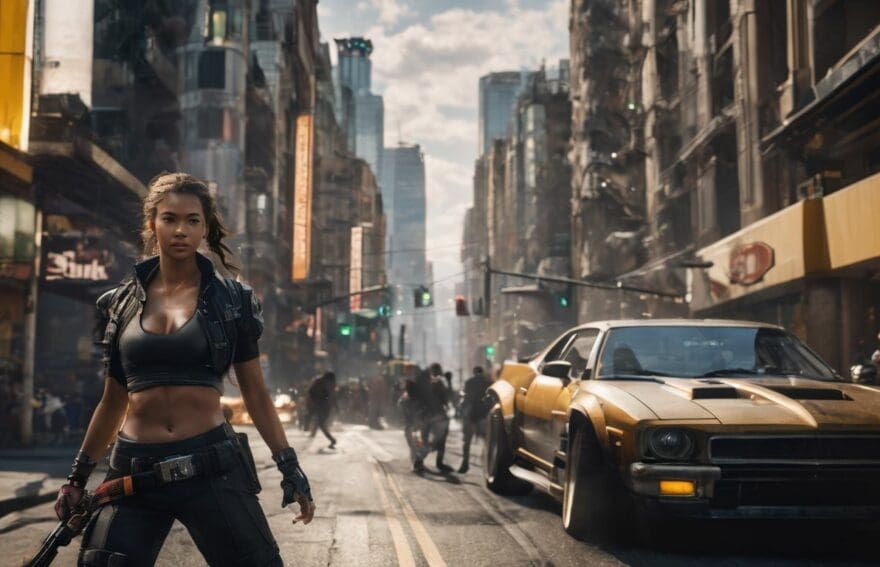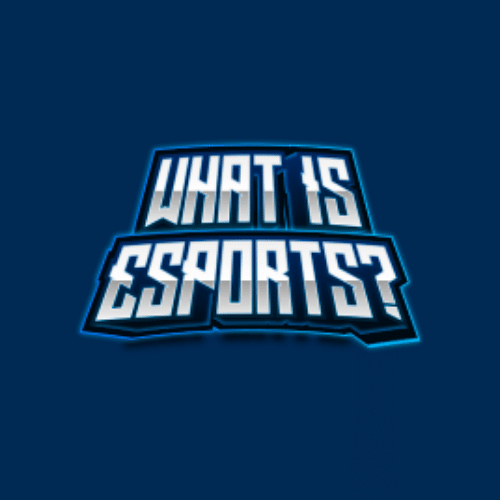The FGC’s Influence on Video Game Design

Updated On: November 29, 2025 by 
As aficionados of video games, we’re no strangers to the pulse-quickening duels that unfold within the digital fighting rings. The kinship felt amongst those of us who revel in this fervour is irrefutable.
We’ve banded together with kindred spirits across the globe and witnessed firsthand how intrinsic the Fighting Game Community (FGC) is in sculpting every jab, kick, and special move that animates our screens.
This article ventures beneath the surface, exploring how profoundly the FGC’s ethos pervades character development, game dynamics and beyond—elevating our virtual battlegrounds to something quite spectacular.
Buckle up; you’re about to delve into an exhilarating odyssey through gaming culture!
The History and Evolution of the Fighting Game Community
The Fighting Game Community, or FGC, has a rich history dating back to the early arcade era. From humble beginnings in local arcades to the global phenomenon it is today, the FGC has played a significant role in shaping video game design and development.
Beginnings
In the neon-lit arcades of the late ’80s, we found our passion ignited by the beep and shimmers of fighting games. Side by side, joystick in hand, we battled it out on pixelated battlegrounds where characters like Street Fighter’s Ryu became household names.
It was here among rows of cabinets that a community was born, united by shared love for combos and competitive spirit.
Our gatherings transformed into tournaments with each quarter slammed onto machine screens to mark our place in line. These showdowns were not just about who had the quickest reflexes or knew the most secret moves; they fostered camaraderie and sparked friendships.
From these humble origins sprang forth an entire subculture dedicated to perfecting every aspect of fighting game play – initiating what would later blossom into a golden age for fighters and us gamers alike.
2000-2009: Early Years
During the early 2000s, the Fighting Game Community (FGC) experienced a surge in popularity as fighting games entered a golden age. Marvel vs. Capcom 2 and Street Fighter III: Third Strike were at the forefront of this era, captivating gamers with their fast-paced gameplay and intricate mechanics.
The rise of arcade communities and local meetups brought players together to share techniques, strategies, and camaraderie. As online gaming platforms emerged, it became easier for enthusiasts to connect with others globally, contributing to the expansion of the FGC’s influence on video game design.
The early years also witnessed an emphasis on character diversity and balanced gameplay within fighting games. Developers began incorporating feedback from dedicated FGC members into their game designs to create more engaging experiences for players.
2010-current
Transitioning from the formative years of the 2000s, the evolution of the Fighting Game Community (FGC) has continued to shape video game design into the current decade. The FGC’s influence on video game development has been noteworthy during this period, with a focus on collaboration and feedback driving advancements in character design and game mechanics.
Developers have increasingly sought input from the community, resulting in games that resonate more closely with player experience.
Moreover, as technology rapidly advances, new tools such as neural networks and A.I. are being harnessed to revolutionise game design within the FGC. This adaptability showcases how the community is embracing innovative technologies to push boundaries and influence modern video game creation.
The Influence of the FGC on Video Game Design
The Fighting Game Community (FGC) has had a significant impact on the design of video games, particularly in character design and game mechanics. The culture of collaboration and feedback within the FGC has led to innovative and balanced gameplay experiences in many popular fighting game titles.
Culture of Collaboration and Feedback
The Fighting Game Community (FGC) embraces a culture of collaboration and feedback, where players and developers work together to refine game design. This close-knit community fosters an environment for passionate gamers to share ideas and provide input that directly impacts the evolution of fighting games.
The FGC’s emphasis on open communication and constructive criticism enables novice gamers to contribute their perspectives, ensuring that diverse voices are heard in the ongoing development process.
In this collaborative space, the FGC actively engages with game developers to offer feedback on character design, mechanics, and competitive features. Through this partnership, the gaming industry benefits from fresh insights and innovative ideas originating within the community itself.
Impact on Character Design
Transitioning from the culture of collaboration and feedback, we see how the FGC’s influence extends to character design in fighting games. The community’s dedication and passion have led to significant innovations in this aspect.
With a keen eye for diversity and representation, FGC members have inspired game developers to create characters that reflect different cultures, backgrounds, and identities. This has not only enhanced the inclusivity of video games but also enriched the gaming experience for players from various walks of life.
Through the FGC’s influence, character design in fighting games is evolving with a focus on depth and complexity. Game developers are incorporating intricate backstories and unique move sets for characters, catering to the discerning tastes of passionate gamers within the community.
Impact on Game Mechanics
The FGC’s influence on game mechanics has revolutionised the way fighting games are designed and played. The community’s dedication to exploring and refining gameplay has led to innovative features such as advanced combo systems, precise timing for move execution, and intricate in-game interactions.
These elements not only cater to experienced players but also offer opportunities for new gamers to learn and improve their skills, enriching the overall gaming experience. The FGC’s feedback loop with developers ensures that game mechanics are continuously refined and balanced, enhancing the competitive nature of fighting games while maintaining an engaging experience for all players.
The intricacies of game mechanics crafted by the FGC have influenced various aspects of character control, attack animations, and defensive manoeuvres within many fighting games. As a result, these enhancements make gameplay more dynamic and responsive to player input – fundamental qualities that resonate with both passionate gamers and those new to the scene.
Examples of FGC-Influenced Games
Games like Marvel vs. Capcom, Super Smash Bros., and Street Fighter have all been heavily influenced by the FGC, leading to unique character designs and game mechanics that have shaped the gaming landscape.
Read on to discover more about how these games were impacted by the FGC’s influence on video game design.
Marvel vs. Capcom series
The Marvel vs. Capcom series has been a pivotal example of the FGC’s influence on video game design, showcasing the unique blend of characters from both universes in fast-paced fighting action.
This iconic crossover franchise is known for its vibrant character designs and dynamic combat mechanics, catering to both casual and competitive players alike. With a strong emphasis on fluidity and versatility, this series has become a favourite within the FGC, shaping expectations for future fighting games.
Incorporating beloved superheroes and villains with diverse set of skills into the gameplay experience, the Marvel vs. Capcom series continues to showcase how character design can push boundaries in fighting games.
Super Smash Bros. series
Transitioning from the character-packed battles of the Marvel vs. Capcom series, we turn our attention to the beloved Super Smash Bros. series, a unique and innovative take on the fighting game genre.
Embracing an approachable gameplay style that speaks not only to competitive gamers but also to those new to fighting games, Super Smash Bros. has solidified its place within the FGC as a gateway into the world of competitive gaming.
The Super Smash Bros. series introduces iconic characters from various video game franchises and immerses them in fast-paced brawls across dynamic stages. This infusion of diverse characters into a single game creates a melting pot of playstyles and strategies, giving rise to an inclusive environment where passionate gamers and novice players alike can find enjoyment and success.
Street Fighter series
The Street Fighter series revolutionised the fighting game genre, introducing iconic characters and unique gameplay mechanics that have left a lasting impact on the FGC. With its diverse roster of characters and complex move sets, Street Fighter has been instrumental in shaping character design standards within the community.
Its influence on game mechanics, such as combo systems and special moves, has set benchmarks for other fighting games to follow, solidifying its position as a pioneer in competitive gaming.
The Street Fighter series’ legacy extends beyond just gameplay; it has also played a pivotal role in shaping the culture of collaboration and feedback within the FGC. The franchise’s enduring popularity continues to inspire game developers to seek input from the community, ensuring that future iterations remain true to the essence of what makes Street Fighter so beloved among gamers.
The Role of Tournaments in Shaping the FGC
– Evolution of Tournament Formats: Tournaments have played a vital role in shaping the FGC, with various formats and structures influencing the community’s growth and development over the years.
– Impact on Game Balance and Development: The competitive nature of tournaments has pushed game developers to prioritise balance and fairness in their designs, ultimately benefiting both players and the industry as a whole.
Evolution of Tournament Formats
The FGC has seen an evolution in tournament formats over the years due to the community’s dedication to competitive gaming. Tournaments have transitioned from local gatherings to international events, shaping the way fighting games are played and enjoyed. Here are some key developments in tournament formats within the FGC:
- Local Meetups: In the early days, tournaments were often small local meetups, providing a platform for players to compete and connect with one another.
- Regional Circuit: As interest grew, regional circuits emerged, allowing players to compete across a broader area and gain recognition within their local communities.
- National Events: The rise of national tournaments brought together top players from different regions, elevating the level of competition and attracting larger audiences.
- International Competitions: Today, international competitions draw players from all over the world, showcasing diverse playstyles and strategies while creating a global stage for top talent.
- Online Tournaments: With advancements in online gaming technology, online tournaments have become prevalent, allowing competitors to participate from anywhere in the world.
- Esports Integration: Many FGC tournaments have integrated into mainstream esports events, leading to increased exposure and recognition for fighting game competitors.
- Diverse Formats: Tournaments now feature various formats such as single-elimination brackets, round-robin pools, and team-based competitions, offering different experiences for participants and spectators alike.
- Community-Led Events: Grassroots initiatives continue to thrive within the FGC, with community-led events playing a crucial role in fostering grassroots talent and maintaining a vibrant competitive scene.
- Crossover Events: Collaborative events with other gaming communities or genres have become more common, promoting inclusivity and expanding the reach of fighting game tournaments.
- Adaptive Approaches: The FGC has shown adaptability by incorporating hybrid formats that combine online qualifiers with offline finals, ensuring accessibility while preserving the excitement of live events.
Impact on Game Balance and Development
The Fighting Game Community’s influence on game balance and development is undeniable. Dedicated gamers’ feedback shapes the competitive landscape, spurring developers to fine-tune character abilities and gameplay mechanics.
The FGC’s keen eye for balanced gameplay has led to an evolution in fighting games, ensuring fair competition and strategic depth.
Furthermore, the community’s dedication to honing their skills has driven game developers to create a more nuanced gaming experience. This commitment allows for continual improvement in game design as the FGC pushes for new mechanics, characters, and strategies that keep players engaged and excited about what’s next.
The Future of FGC Influence on Video Games
The future of FGC influence on video games holds the potential for even more collaboration between game developers and the community, leading to innovative and exciting new titles.
However, there may be challenges and limitations as the gaming landscape continues to evolve, which could shape the direction of future design influences.
Potential for More Collaboration
The potential for more collaboration within the Fighting Game Community (FGC) is immense. As passionate gamers continue to push boundaries and explore new ideas, there are fresh opportunities for developers and players to work hand in hand.
The FGC’s dedication to innovation and improvement creates a fertile ground for game designers to tap into the wealth of knowledge and creativity present within the community. This collaboration has the potential to revolutionise fighting games, bringing forth exciting new mechanics, character designs, and competitive features that truly resonate with both novice gamers and seasoned veterans.
Furthermore, as the gaming industry continues to evolve, there is an opportunity for even greater synergy between the FGC and developers in shaping not only fighting games but also influencing broader trends across all genres.
Potential Challenges and Limitations
The FGC faces challenges such as adapting to the impact of the COVID-19 pandemic on events and communities, as well as navigating varying levels of understanding from outsiders, particularly those with gaming affiliation.
The racial architecture within the FGC also presents unique obstacles in terms of interpreting video games as media within the community. Additionally, integrating Esports into the FGC landscape poses potential limitations that need to be addressed.
Moving forward, we must explore ways to overcome these challenges and limitations while continuing to innovate and shape video game design within the FGC.
Conclusion
In conclusion, the Fighting Game Community’s influence on video game design is undeniable. Its passion and dedication have driven collaboration and innovation, shaping the development of fighting games.
The FGC’s impact extends beyond just its preferred genre, influencing the wider gaming industry with its valuable feedback and preferences. As technology advances and new ideas emerge, the future holds exciting possibilities for the FGC’s continued influence on video game design.
With a culture focused on inclusivity and competition, the FGC is poised to remain a driving force in shaping the evolution of video games.
FAQs
1. What does FGC stand for in the gaming world?
FGC stands for Fighting Game Community, which includes passionate video gamers who play and discuss fighting games.
2. How has the FGC influenced video game design?
The FGC’s influence can be seen in how developers create new characters, improve game mechanics, and foster competitive gameplay to keep the golden age of fighting games alive.
3. Do video game designers listen to the community?
Yes! Many video game designers actively seek feedback from the FGC to enhance their games and make sure they meet player expectations.
4. Why is community influence important for fighting games?
Community influence ensures that fighting games remain engaging and challenging by reflecting what dedicated players enjoy and expect from these high-adrenaline titles.


